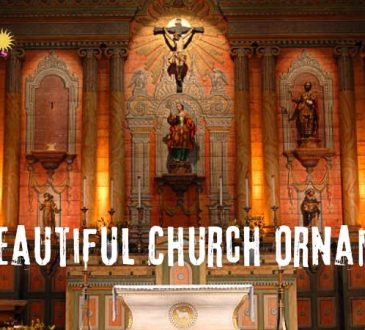Top 5 Beautiful Churches in Italy You Should Know
Every city, town, and village in Italy, large or little, has a church that the country is known for. From spectacular cathedrals to little churches, it appears that every part of the lovely nation has a centuries-old church. Although it is difficult to determine the precise number of churches in Italy, some of the most notable should not be missed the Beautiful churches in Italy. If you’re planning a trip to Italy soon, make seeing as many churches as possible a primary priority.
Contents
Basilica of St. Francis in Assisi

The Basilica of St. Francis, a bi-level architectural marvel, was consecrated in 1253 and is a UNESCO World Heritage Site. It is one of Italy’s most famous churches, known for its beauty, and the focal point of many Christian pilgrimages throughout the country. This cathedral is made up of two churches: an upper Gothic basilica and a lower Romanesque basilica. They are ornamented with medieval frescoes by painters such as Pietro Lorenzetti, Giotto, and Cimabue.
Not to be missed is the High Altar, which is flanked by graceful columns and capped with a marble slab brought from Constantinople.
Basilica of the Holy Cross
The Franciscans constructed the Basilica of the Holy Cross (Basilica di Santa Croce) on the site of an earlier church, which was said to have been founded by St. Francis of Assisi himself. It is a gigantic structure composed of a sequence of simple enormous rectangular rectangles. Originally, the church’s interior and exterior ornamentation were relatively limited, but it now houses works by a number of notable painters and sculptors, including Giotto and Donatello.
The church is also home to a number of well-known graves, including Michelangelo’s. According to legend, Michelangelo requested that his tomb, which was created by Giorgio Vasari, be positioned directly to the right of the church entrance so that, on the Day of Judgment, he would see the Duomo through Santa Croce’s doors.
Galileo is buried there next to Michelangelo, 100 years after his demise, in 1737. Inside the church are buried Niccol Machiavelli, Lorenzo Ghiberti, and a tomb created for Dante, who the Florentines had banished from the city in 1301. The tomb in Santa Croce remains an empty memorial to the great poet since Ravenna, where Dante is actually buried, refused to return his body.
San Marco Basilica

The new church became the doge’s official chapel and, by the 15th century, was connected to the Doges’ Palace. The main and subsidiary domes of the church reflect the well-known shape of ancient Byzantine buildings and show influences from Constantine’s Church of the Apostles in Constantinople.
A mosaic representing the interment of St. Mark’s remains over the basilica’s far left portal presents an impressively realistic depiction of what the cathedral looked like in the 13th century, before the 15th-century installation of intricate white Gothic cresting.
St. Mark’s had been structurally finished for a long time, unlike the cathedrals of Florence and Milan, which by the end of the 13th century still stood exposed to the sky. As a result, the church’s structure already included a wealth of detail and narrative that had been incorporated by previous generations of monarchs and artists. St. Mark’s Basilica, which was made a cathedral in 1807, dominates one of the most well-known squares in Europe. It lends the area a sense of religious and civic heritage that is rife with legend and glitz.
Cathedral of St. Agatha in Catania
Although Mount Etna volcanoes and earthquakes have damaged the Cathedral of St. Agatha on multiple occasions, it has always been rebuilt and remains one of the most beautiful churches in Italy and Sicily. Indeed, it is one of the most beautiful Italian Catholic churches, with a tri-level Sicilian Baroque façade carved from Carrara marble.
The façade is embellished with Corinthian columns and a bell tower built in 1387. The interior has vaulted ceilings, beautiful wood carvings depicting St. Agatha’s life, and saint frescoes from the 17th century. Make sure to visit Catania if you’re in Sicily to view St. Agatha’s Cathedral. After St. Peter’s Basilica and the Duomo of Milan, the church bell is the third largest in the nation.
Church of the Gesù

The church has ten chapels, one of which is devoted to St. Ignatius and holds the saint’s tomb as well as a statue of the saint designed by Pierre le Gros the Younger. The church’s interior was initially relatively empty until Giovanni Battista Gauli was commissioned to paint it; the primary highlight is the ceiling fresco, The Triumph of the Name of Jesus. The church also houses the original picture of Madonna della Strada (Our Lady of the Way), the Jesuits’ patroness.
The artwork is a late 15th-century Roman school creation by an unidentified artist. In many ways, the Church of the Gesù represents the Catholic Reformation. The Jesuits, who eventually became the largest order of the church, were its most well-known order and it represented the new developments in the built structure of the church.



